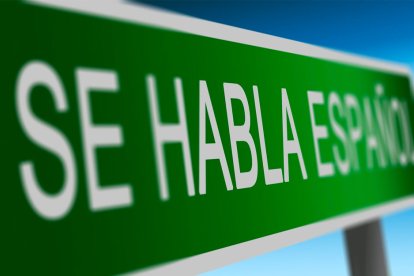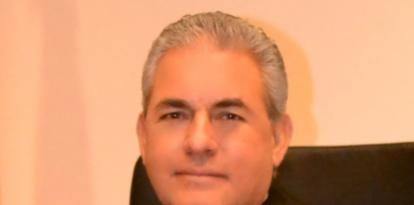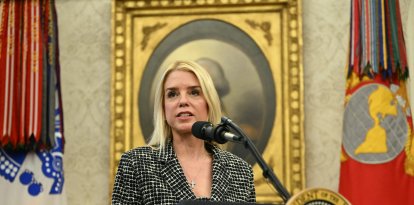Spanish: a language that unites 600 million Spanish speakers
On April 23, Spanish Language Day is celebrated to honor and raise awareness about the history, culture and use of the Spanish language.

(jairojehuel / )
April 23 marks Spanish Language Day, a holiday approved by the United Nations Department of Public Information to honor the language and raise awareness of the history, culture and use of Spanish as an official language. The choice of the day was not random: on April 23, 1616 was buried the writer Miguel de Cervantes, the greatest exponent of the Spanish language and writer of Don Quixote of La Mancha (1605), the most important novel ever written in Spanish and one of the most widely read books in history.
Spanish continues to expand. Year after year, more and more citizens of the world choose to study it and use it in their daily lives. It is currently spoken by some 600 million people. That is, 7.5% of the world's population. According to the report El español: una lengua viva (2022) by the Cervantes Institute, Spanish is the world's second mother tongue -behind Mandarin Chinese-, with 496 million people. In addition, it is the fourth in the global computation, counting those with native proficiency, basic proficiency and those who are learning it. The fourth of an estimated 6,000 to 10,000 languages worldwide.
Among the countries where Spanish is the official language, Mexico ranks first in number of Spanish speakers with 130,118,356, followed by Colombia (51,609,474), Spain (47,344,649) and Argentina (46,234,830). Among the countries where Spanish is not the official language, the one with the highest number of Spanish speakers is United States (56,757,391), ahead of the total sum of the 27 countries of the European Union (excluding Spain) (27,242,000), the United Kingdom (4,957,000) and Morocco (1,671,409).
In any region of the planet there are people who speak Spanish; a language that offers endless possibilities due to its social, cultural and professional richness. That is why, year after year, more and more people decide to learn Spanish to broaden their knowledge of the language. Nearly 24 million students around the world decided to study Spanish in 2022. The United States is the non-Spanish-speaking country with the highest number of students with 8,077,923 - 91% of U.S. schools offer Spanish classes - followed by Brazil (5,234,160), France (3,335,475) and the United Kingdom (2,027,994). Specifically, of the more than eight million students of Spanish in the U.S. last year, 7,363,125 were in primary, secondary and vocational education; 712,240 in university education; and 2,558 in official schools.
Spanish in the United States: it will be the country with the second largest number of Spanish-speakers in the world
Of the nearly 57 million people living in the United States who speak Spanish, some are native Spanish speakers, others have full, partial or basic proficiency in the language. According to The Hispanic Council, among those who have Spanish as their native language, 71% always use it at home and with their family environment, which shows that they do not want to abandon their cultural roots and continue to use it as their first language.
With population growth, it is estimated that in less than forty years the U.S. will be the country with the second largest number of Spanish speakers in the world, behind only Mexico. And the first where Spanish is not an official language. The continued influx of Hispanics seeking a better life is key to the advancement of Spanish in the United States.
The powerful heritage and widespread influence of Spanish in the U.S. and in English
It should be noted that Spanish arrived in the U.S. by the explorer Juan Ponce de León more than five centuries ago, after landing in Florida. English, the country's official language, has drawn on Spanish vocabulary to expand its dictionary. Also, to couple words that did not have an English translation. Examples of these are terms such as "tornado", "rodeo", "mosquito", "tango", "siesta" or "rumba". This Hispanic influence in English can also be seen, for example, in gastronomy, where words such as "paella", "chorizo", "taco" or "nacho" are preserved in their original spelling.
The influence of Spanish has reached all the way to Congress. As reflected in the third edition of The Hispanic Council's report Spanish in U.S. politics: analysis of its use in the House of Representatives and the Senate.In 1960, former President John F. Kennedy's campaign team developed a Spanish-language ad message to appeal to the Hispanic community to vote. Since then, Spanish has been gaining more strength in politics. Currently, more than 100 federal congressmen use Spanish to prepare their communications or deliver their speeches.
And that influence goes even further. The toponymy of the geography of the United States has been nourished by Spanish. According to the report Hispanic heritage and Spanish in U.S. toponymy of The Hispanic Council, eight states have Spanish names or derivatives of Spanish namesThe following countries are included: California, Colorado, Florida, Montana, Nevada, New Mexico, Texas and Utah, as well as Puerto Rico, District of Columbia, Northern Mariana Islands and Virgin Islands. In two other states, Arizona and Oregon, there are theories about the origin of their names, which according to many scholars would come from Spanish. In terms of smaller territorial divisions, 46 states have counties or municipalities with names inherited from Spanish. Examples are: Las Vegas, San Francisco, Los Angeles, Hernando County or DeSoto County.
This influence is also noticeable in the field of communication. The Hispanic Council counts 624 media outlets that broadcast or write in Spanish, with Voz Media being one of the major references for the Spanish-speaking community.
"Hello", "friend" or "party": say them without shame!
Such is the influence in the United States that there are words that are often pronounced in Spanish instead of English. More often he hears "hello" instead of "hello". Or "amigo" instead of "friend". Hence, it is very common to hear the phrase "Hello friend, how are you? Other words such as "party" or "thank you" are not lacking in U.S. slang.
It is always done in the most colloquial sense. You are not going to hear it in a professional or more formal setting. And not only among Spanish speakers or those who have certain notions of Spanish, but also among those citizens who have no knowledge of the language. This colloquial usage helps boost Spanish among Americans, who are attracted to Spanish because many think it is very "melodic" or "sounds very good."
RECOMMENDATION





















